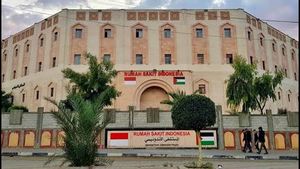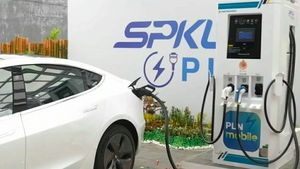YOGYAKARTA - The construction of the high-speed train was not only intensified by the Indonesian government and became the first country in Southeast Asia to operate bullet trains. Malaysia is known to have also worked on a high Speed Rail project that connects Kuala Lumpur to Jurong. But unfortunately, Malaysia's high-speed rail project stalled.
Malaysia canceled the HSR high-speed rail project in 2020. The Mega project that invested funds amounting to 17 billion dollars is now unclear. The project was carried out under the auspices of the Malaysian state-owned company owned by the Ministry of Finance. So what is the cause of Malaysia's fast train project stalled?
The Malaysia-Singapore high-speed rail project started with the initiation of the two countries to develop the area traversed by HSR. Despite being colored by debate, the two neighboring countries agreed to build a high-speed train in 2013.
This planned fast train has a track with a track length of 218 miles or 350 kilometers from Kuala Lumpur to Jurong. The fast train can shorten the journey from Kuala Lumpur to Singapore to only about 90 minutes. If compared to using a private vehicle or bus, the travel time can be more than 4 hours.
But unfortunately both parties had to carry out several changes to the agreement which forced the cooperation of the high-speed train to be stopped. The termination of the project was officially announced on December 31, 2020.
The stalled Malaysian high-speed rail project occurred after a recount of the so-called burdensome investment value. Currently, the Malaysian government is looking for private parties interested in continuing the work on the high-speed rail project between neighboring countries and Singapore.
The Malaysian government is reluctant to use state money to fund investments in the construction of high-speed trains because it is considered burdensome for their state budget. The project, which is managed by the Malaysian state-owned company, opens up opportunities for private investors who are interested in funding the public-private partnership model.
When the project was canceled in 2020, it was estimated that the construction of the high-speed train would cost around 17 billion US dollars. The Malaysian government wants the project to fully receive funding from investors quickly. Actually, there are companies from Japan, China, South Korea, and Europe that have stated that they are interested in establishing development contracts, operating, and financing the construction of the project.
"(The process) marks the government's initiative to reactivate the high-speed rail project, through new funding mechanisms and implementation models in an effort to further improve rail transportation infrastructure and strengthen the national economy," MyHSR Corp wrote in its official statement.
Previously, Malaysia proposed several schemes for changes to the Singapore government regarding project structures, station designs, and advancing project completions for two years earlier. According to Malaysia, the accelerated HSR project could reduce the negative impact of the economic downturn during the COVID-19 pandemic.
Malaysia's Economy Minister, Mustapa Mohamed, stated that the Kuala Lumpur government allows more flexible financing options, including suspended payments and public-private partnerships.
SEE ALSO:
Such is the review of the reason for the stalled Malaysian high-speed rail project and the fate is not clear. If this project can be realized, the fast train from Kuala Lumpura-Singapore will operate in 2026.
Stay up to date with the latest domestic and other overseas news on VOI. You present the latest and most updated nationally and internationally.
The English, Chinese, Japanese, Arabic, and French versions are automatically generated by the AI. So there may still be inaccuracies in translating, please always see Indonesian as our main language. (system supported by DigitalSiber.id)

















